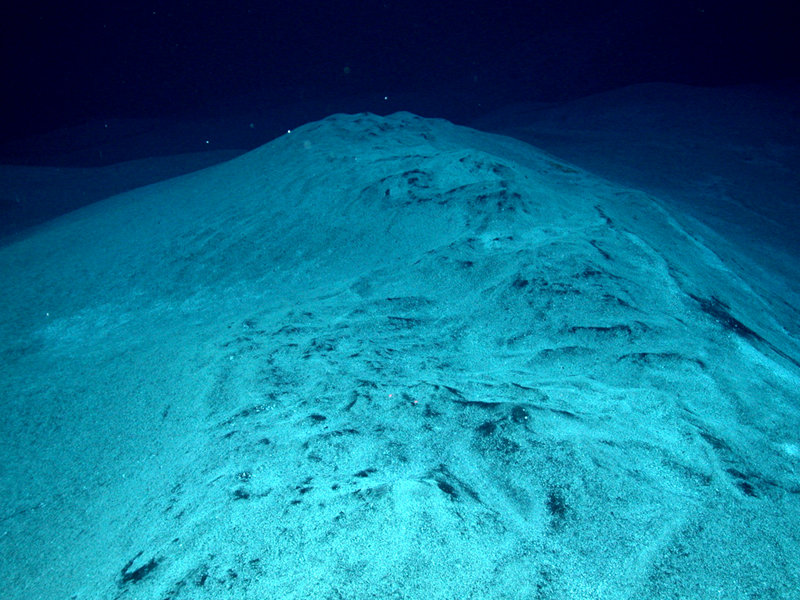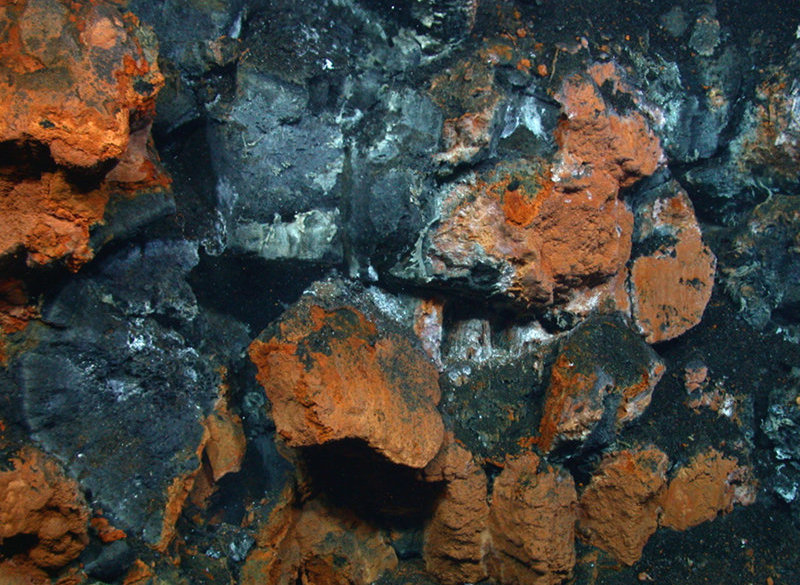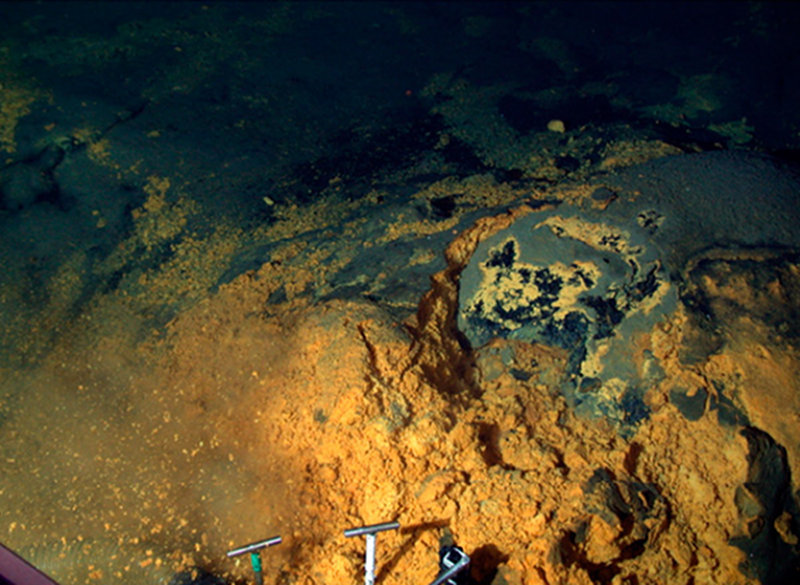
By Brad Tebo, Marine Microbiologist
Rick Davis, Graduate Student
Oregon Health & Science University
One of the most astonishing features of hydrothermal vents is the unusually high biomass and fast growth rates of microbes that grow on and around the vents. The biomass is extremely high because of the chemical energy present in hydrothermal fluids. In the rest of the deep sea, away from hydrothermal vents, the biomass is typically extremely low because of the lack of energy that can be converted to biological energy. In the shallow ocean sunlight is the energy that enables primary producers (phytoplankton) to convert carbon dioxide to organic carbon which results in the production of the high biomass found there. The deep sea is a dark place however, and most organisms that inhabit it are dependent on obtaining organic carbon and energy from sinking organisms and waste from the shallow sea. For many deep sea organisms, small meals can only be expected on a sporadic basis and they have adapted to this lifestyle by conserving as much energy as possible by reducing their metabolisms and growing very slowly.

Microbial mats coated in white sulfate material were observed and sampled at several vent sites at West Mata in 2009. These mats were dominated by Epsilonproteobacteria which is a class of bacteria often associated with sulfur oxidation in marine environments. Image courtesy of NOAA / NSF / WHOI. Download larger version (jpg, 2.7 MB).
Biomass at hydrothermal vents is extremely high because the chemical energy found in the hydrothermal fluids can be utilized by chemoautotrophic bacteria in much the same way that photoautotrophic organisms in the shallow ocean use the energy from the sun. Most of the chemicals that typify hydrothermal fluids are referred to as being highly reduced or electron-rich. Essentially, this means that they easily react with oxygen or compounds containing oxygen (like nitrate NO3- which is nitrogen plus 3 oxygen atoms). They do so by transferring their electrons to the oxygen-rich compounds. When this happens we say that the “reduced“ chemical (referred to as the ‘electron donor’) was oxidized. The “oxidation“ reaction releases energy that the microbes can convert to biological energy to fuel processes such as carbon fixation. Most of these chemoautotrophic bacteria have evolved to be specialized in the utilization of a single 'electron donor'. As a result, we characterize microbial communities at hydrothermal vents by what electron donors are present in the hydrothermal fluids that nourish them.
Many hydrothermal systems, especially extremely hot focused vents, are rich in volatile compounds that can act as electron donors. Sulfur compounds, such as hydrogen sulfide and elemental sulfur, are probably the most common electron donors in these systems. Microbial mats coated in white sulfate (SO42-; sulfur with four oxygens) material were observed and sampled at several vent sites at West Mata in 2009. These mats were dominated by Epsilonproteobacteria which is a class of bacteria often associated with sulfur oxidation in marine environments. Other volatile compounds such as hydrogen gas, methane, and carbon monoxide may also provide energy for microbes at these vents.

The orangish-brown material is iron oxide encrusted microbial mats, often observed at low-temperature hydrothermal vents. Image courtesy of NOAA / NSF / WHOI. Download larger version (jpg, 2.1 MB).

The grayish black material is manganese oxide encrusted microbial mats and minerals. The yellow orange material is iron oxide encrusted microbial mats and minerals. Image courtesy of NOAA / NSF / WHOI. Download image (jpg, 139 KB).
Low temperature, diffuse hydrothermal vents are often rich in reduced metal compounds that can be oxidized (rusted) to produce energy. Iron oxide encrusted microbial mats are often observed at low-temperature hydrothermal vents. The orangish-brown mats can be several centimeters deep and can be rapidly formed in only a few weeks. These microbial mats have less biomass than sulfur oxidizing microbial mats because there is less energy released during the oxidation of iron compared to sulfur. These microbes must therefore oxidize much more iron to gain enough energy to fix carbon than sulfur oxidizers and thus produce copious quantities of iron oxides (rust). Microscopic analysis of these microbial mats show that less than 1% of the mat is biological-- the rest is oxidized iron.
Manganese oxide encrusted microbial mats and minerals are also observed at hydrothermal vents, often in conjunction with iron oxides (see image). Much less is known about these communities than other hydrothermal vent environments. Chemoautotrophic manganese oxidation is one of the few microbial metabolisms that should exist in theory, but has never been definitively found in nature. We hope that samples obtained from this cruise will help us finally find this missing microbe that has eluded scientists for over three decades.